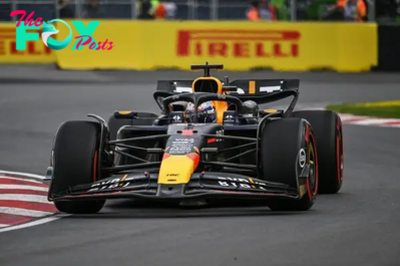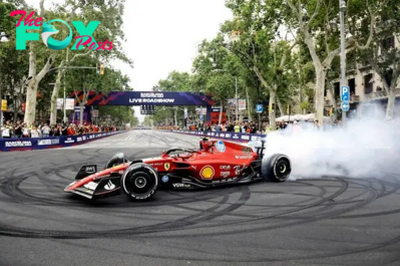F1 News
The challenges Pirelli faces to meet F1’s 2026 rules targets
As part of an effort to make F1 cars smaller and lighter, Pirelli agreed to reduce the front tyre width by 25mm and the rear tyre width by 30mm. The tyres themselves will also become smaller in diameter, going from the current 720mm diameter to 705-710mm, although F1 will still be using 18-inch wheels.
Despite the reduced tyre sizes the FIA is not projecting Pirelli's new tyres to be significantly down on grip compared to their current product.
"We are not expecting significant difference from the changes being done on the tyres with respect to general mechanical grip," the FIA's single-seater technical director Jan Monchaux said. "It might be a slight reduction because the tyres are smaller, but it's not a departure which is a source of real concern for us."
There had been talk of reducing tyre and wheel sizes even further, with a switch to 16-inch rims being on the table. But the FIA and Pirelli agreed that it would not be wise to add another variable to what is already a complex set of technical changes.
"We don't want the tyres to be a source of concern early 2026, and with these new power units, which in the traction phase will have a massive amount of power, we simply were a little bit nervous at going much smaller," Monchaux explained.
"The reduction on the tyres is certainly less than we would have all hoped, but we didn't want too big a departure from the known product, which currently we have and are fairly happy with."
Pirelli's motorsport director Mario Isola said staying with 18-inch tyres would give the Italian tyre manufacturer a better chance to tackle tyre overheating, a common criticism of its current F1 rubber.

Mario Isola, Racing Manager, Pirelli Motorsport, in the team principals Press Conference
Photo by: Zak Mauger / Motorsport Images
"We proposed the narrower 18-inch tyre to save some weight. In our opinion it's a good compromise between saving weight and a tyre that has characteristics that are required in 2026," Isola said.
"With the 16-inch tyres, we were worried about the load capacity of the tyre, as well as the possibility to increase the overheating quite a lot. We did some simulations, and we made a proposal to stay on 18-inches tyres, which was accepted."
The weight saved from the smaller tyres should amount to four to five kilogrammes, which is part of the FIA's ambitious target to reduce the car weight by 30kg.
FIA single-seater director Nikolas Tombazis said the governing body would grant Pirelli "increased opportunities" to test for 2026. The biggest hurdle for Pirelli, however, is the absence of a representative mule car.
Pirelli expects to have physical prototypes ready for testing by September this year, but it will only be able to try those out on current era cars in low-downforce trim, which derive their aerodynamic loads in a very different way than the 2026 cars and don't feature active aerodynamics.
"We will have mule cars, but they will be bigger, heavier, without any active aerodynamics and with downforce that is coming from a different concept," Isola explained.
"Testing our narrow tyres on these cars is giving us the possibility to collect data, but then we need to crosscheck the data with the simulations to understand if we are going in the right direction. We cannot rely just on the track testing.

F1 2026 FIA car renders
Photo by: FIA
"We had a similar situation in 2016, because the 2017 the cars were five or six seconds per lap quicker than previous year.
"We are going to test with a downforce configuration that we believe is simulating what is going to happen in 2026. The real problem is that you have a lot more drag. We don't have a 2026 car, so we don't have a car able to do this X mode and Z mode."
Having access data from all 10 teams should help Pirelli stay in the right ballpark, but if it needs to make further adjustments it can still play with the range of compounds available further down the line.
For next year Pirelli is working on a sixth, softer compound to should be more suited to lower load street circuits, and it could keep that wider range into 2026.
"We can correct or fine tune with a different range of compounds," Isola added. "So we can go softer, for example, if the level of load is lower compared to now. It's always a balance that we have to find when we know the characteristics of the new car."
With 2026's final regulations not yet signed off and Pirelli's tyre constructions needing to be finalised by 1 September 2025, that will give the Italian brand around 12 months to complete its development. While it's an aggressive timeline, Isola is confident that Pirelli can get the project over the line.
"It's not something new, honestly," he concluded. "It was the same thing with the other big rule changes we had; we do our best to make the best tyre for the future as we did in the past.

Pirelli and Ferrari team members
Photo by: Pirelli
"There are some limitations, we accept that, but we work in the best possible way to supply tyres with the required characteristics. If they are not perfect the first year, we will work to adjust them or fine-tune them for the following year, as we always do.
"But that's the same also when the regulations are not changing, because in any case the teams are developing the cars, and we have to follow with our tyres."
-
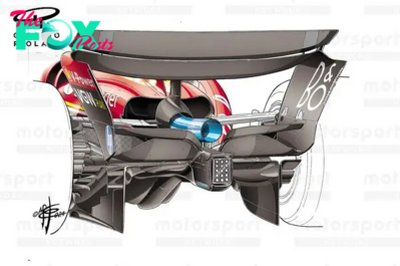
 F1 News12h ago
F1 News12h agoThe new Ferrari F1 upgrades overshadowed by its old bouncing problems
-

 F1 News18h ago
F1 News18h agoRicciardo: No need to revert RB F1 upgrades yet after Spain shocker
-
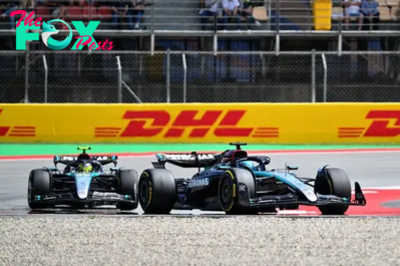
 F1 News1d ago
F1 News1d agoWhy Mercedes feels it is closer to the top than it looked in F1's Spanish GP
-

 F1 News1d ago
F1 News1d agoMcLaren: Norris could have done nothing more to win F1 Spanish GP
-

 F1 News1d ago
F1 News1d ago10 things we learned at the 2024 Spanish Grand Prix
-

 F1 News1d ago
F1 News1d agoAlpine in late bid for Carlos Sainz as F1 talks ramp up
-

 F1 News1d ago
F1 News1d agoAlonso: Aston Martin needs to "talk less, deliver more" in F1
-
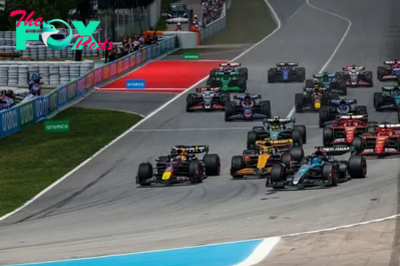
 F1 News2d ago
F1 News2d agoVerstappen "would have been second" without first-lap Spanish GP pass on Norris


